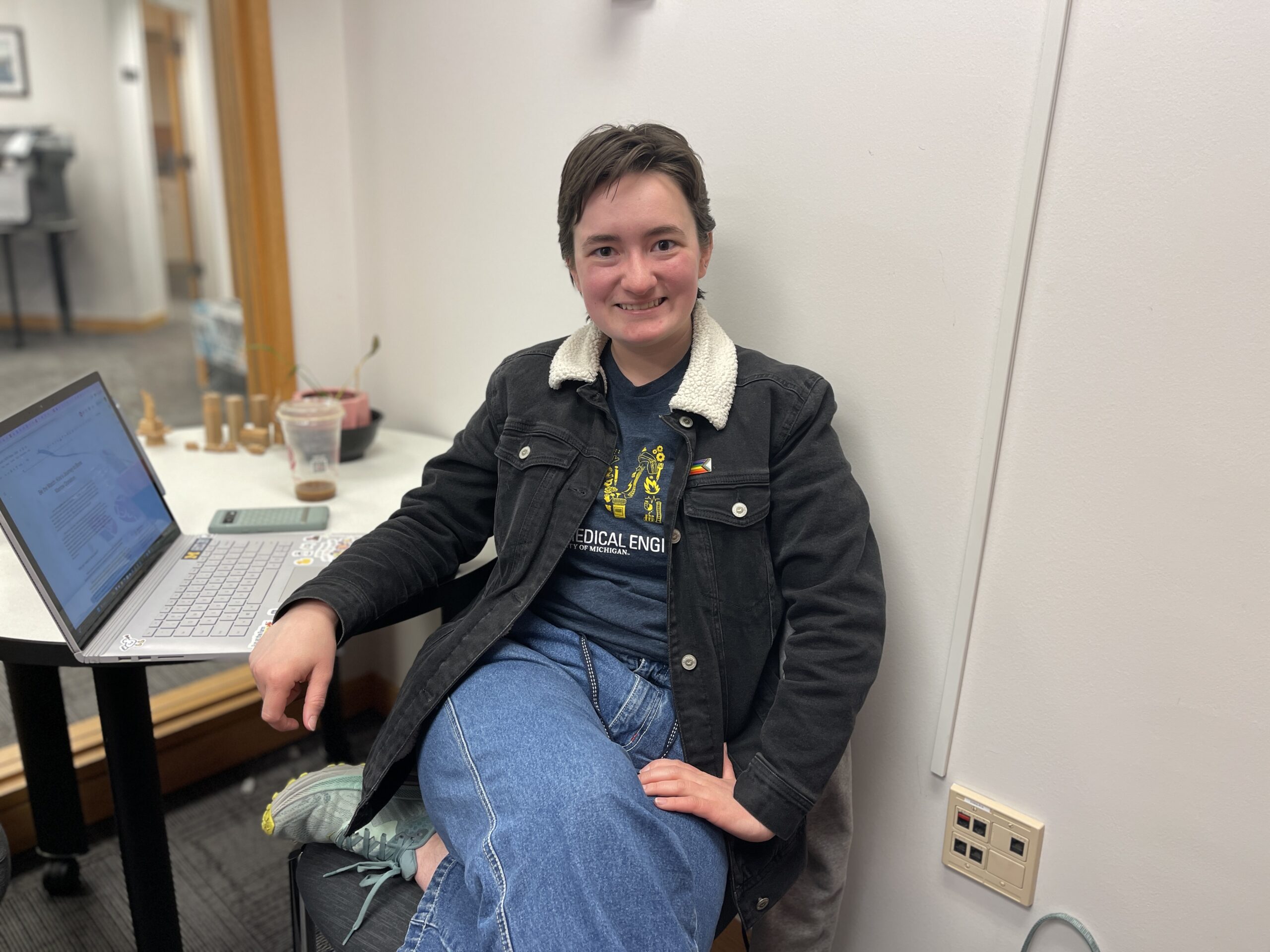In celebration of National Donate Life Month, Industrial and Operations Engineering master’s student Kira Woodhouse shares about the process of becoming a living organ donor.

I was freshly eighteen when the world began to shut down in the early months of 2020. In the midst of being unceremoniously displaced from my school, work, and community I found dear, I sought ways I could help the world outside of my quarantined walls. As an adult, I was newly eligible to sign up to offer myself as a bone marrow donor with the National Marrow Donor Program (formerly Be the Match). I filled out the contact forms, sent in a home saliva sample, and continued on with my life as this decision faded into the background.
Almost four years later, I was visiting my parents’ home over winter break when I received the call. I was somewhat speechless at first, and even moreso surprised. They had a patient who needed a bone marrow donation to have the greatest chance at survival, and I was the best match in the whole registry. I was informed that she would likely need a surgical transplant, a kind which now makes up only 10% of donations as newer non-invasive procedures are developed. A slew of documents and resources were sent to my inbox, and I was asked to call them as soon as I decided if I would be open to proceeding. It took me less than an hour.
Why do I want to be a donor?
While my peers are overwhelmingly supportive of this process, I also receive a lot of questions about what motivates me to undergo this process, and the answer is multifold.
First, as someone who works in healthcare, I want to be part of healthcare solutions. Bone marrow donation can be a patient’s best, or only, chance at extended survival. I have had the privilege of knowing people young and old who have been saved through this process. I am also familiar with medical settings enough that I have no anxieties about undergoing surgery. Even further, while enrolled in IOE 813 last fall with CHEPS Faculty Director Amy Cohn, I learned more about the intricacies of informed consent for marrow transplants from Sung Won Choi, MD, MS and Jodyn Platt, MPH. My workplace and family support my decision, and I have the privilege of being surrounded by others just as excited about this as I am.
Secondly, I think that we should all strive to be good to other people. On a personal note, I have a sibling with complex medical needs. Growing up it was no secret that one day, she will likely need an organ transplant to ensure she has the best health possible. I hope that one day if I or my family member needs a transplant, the community would provide if able. I want to be able to contribute that gift to someone else in their time of need.
What next?
As I await a final transplant date, I have been undergoing additional screenings and generally keeping myself as healthy as possible. Many of the requests, such as limiting behaviors which could expose me to blood-borne pathogens, are in line with my day-to-day life already. I eat well, and have a foster dog who is thrilled to go on as many long walks with me as I want. The patient and her doctor have been progressing her treatment and chemotherapy over these past weeks, clearing the way for my bone marrow to take over her immune system once received.
Your help could be the key to someone having more tomorrows. More adventures, more holidays, more time spent with family and friends. Your genetics could be the uniquely perfect piece, allowing others to grow up and grow old. Let’s all take steps to build the world we want to live in.
For more information or to sign up as a donor, please visit the National Marrow Donor Program website.
— Written by Kira Woodhouse, CHEPS Student
